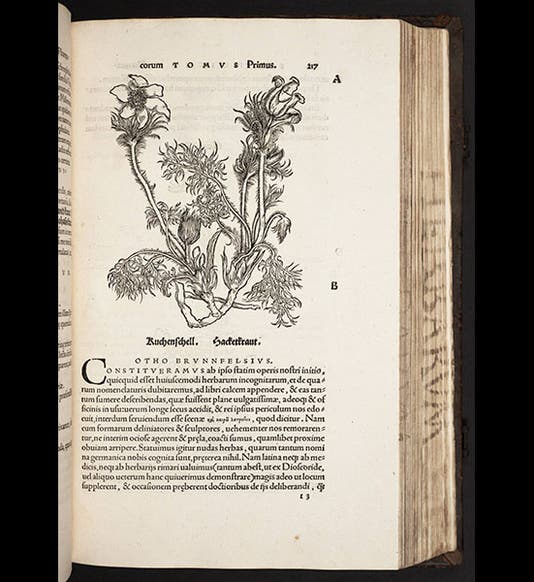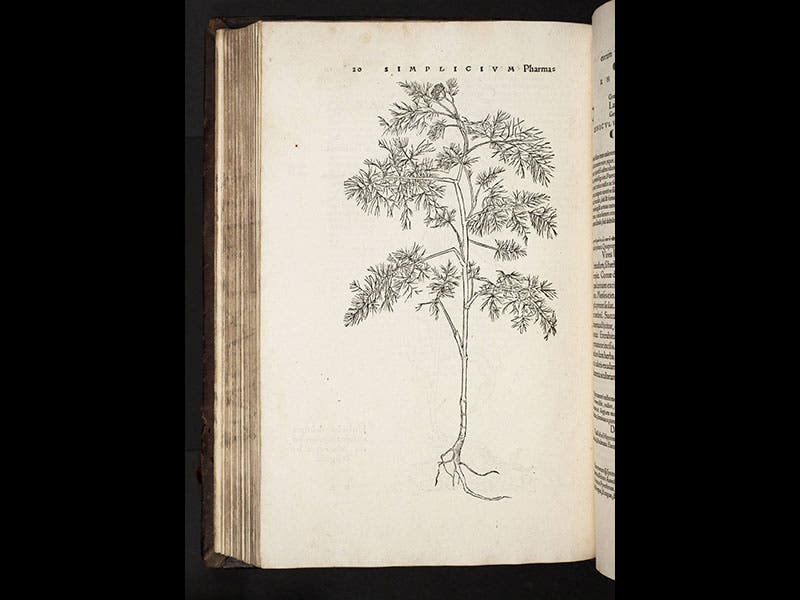Scientist of the Day - Otto Brunfels
Otto Brunfels, a German physician and botanist, died on or about Nov. 23, 1534, at the age of perhaps 45. Brunfels’ name is associated with one of the landmark books of Renaissance science, the Herbarum Vivae Eicones ad Nature Imitationem (1530-32), commonly referred to as Brunfels' Herbal. The full title tells us that this book contains images of living plants drawn from nature, and that indeed is why this book is so significant, but that is the part of the book with which Brunfels had nothing to do. Brunfels supplied the text, drawn mostly from the ancient medical botanist Dioscorides, and illustrations were the last thing he had on his mind when he submitted his manuscript to Johann Schott, his publisher in Strasbourg. But Schott had the odd notion that pictures might be as useful as words in conveying the characteristics of plants, and he commissioned naturalistic paintings from the Nuremberg artist Hans Weiditz, which were then converted to woodcuts and printed with the book. These life-like images were like nothing that had ever appeared in any printed book of natural history, and they forever transformed the style and eventually the substance of books describing nature. Brunfels never quite got used to the novel appearance of his Herbal, and he was not entirely pleased with woodcuts showing broken stems and wormy leaves (see the fifth image above). But before he could protest too much, he was dead, and his herbal became the transforming agent for a revolution in natural history.
The images above, all drawn from our copy of Brunfels' Herbarum, depict Weiditz's renderings of, in order: a pasqueflower, a strawberry, fennel, liverwort, and a thistle, followed by the woodcut emblematic title page. We featured the work in our 2009 exhibition, The Grandeur of Life, where you can see an additional lively woodcut of a narcissus.
Dr. William B. Ashworth, Jr., Consultant for the History of Science, Linda Hall Library and Associate Professor, Department of History, University of Missouri-Kansas City. Comments or corrections are welcome; please direct to ashworthw@umkc.edu.












